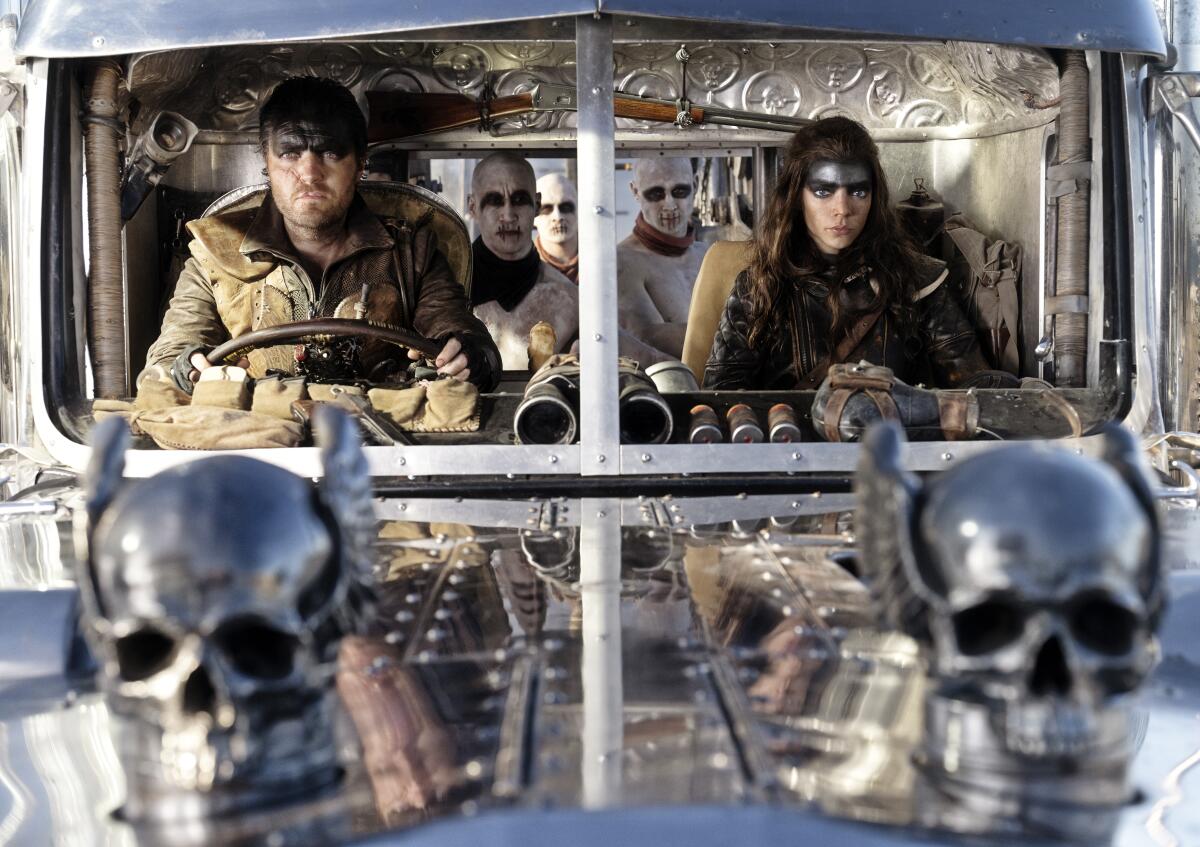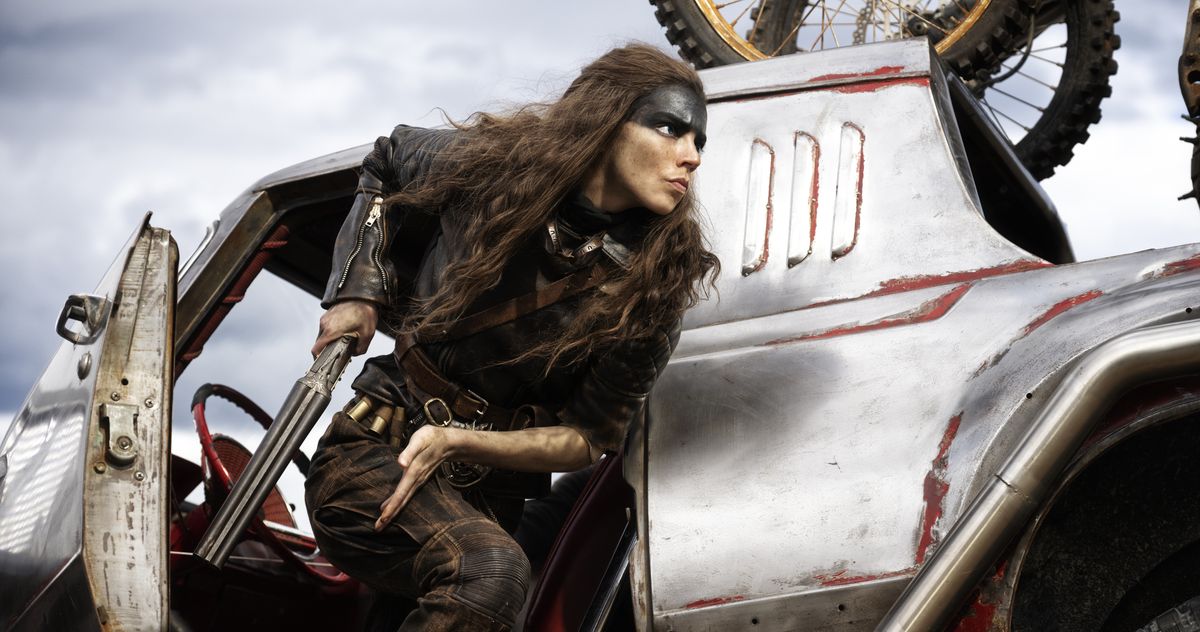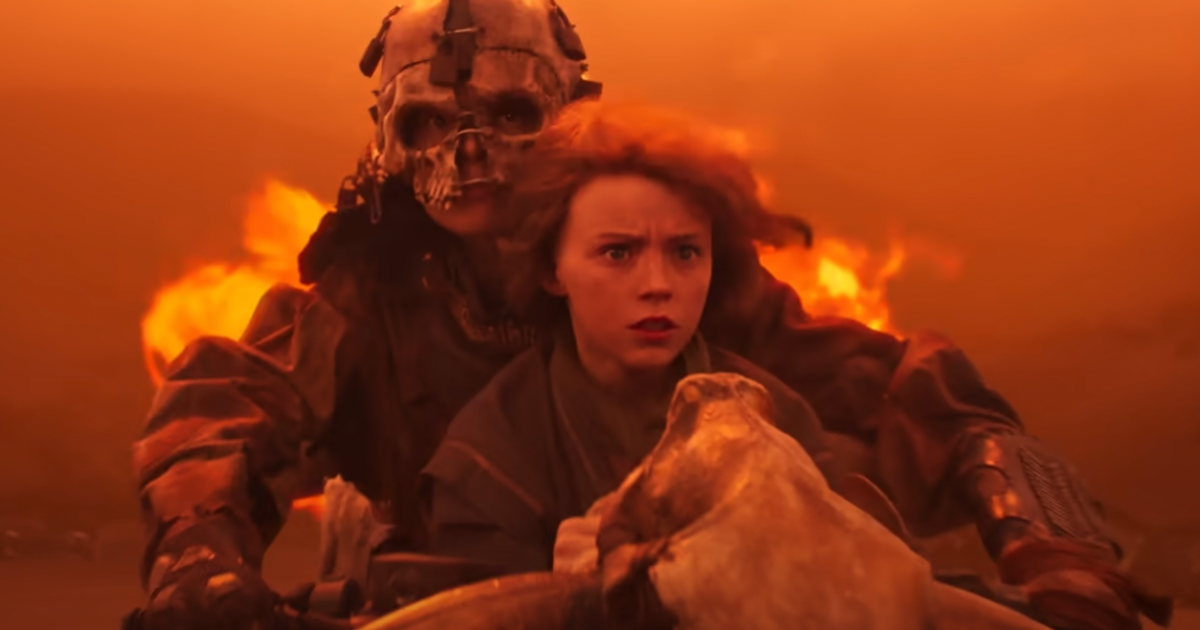When Australia’s George Miller came here in 2016 to serve as jury president, just months after his “Mad Max: Fury Road” won six Oscars , he swept in like a conquering hero. His movie was undeniable: a reinvigoration of both his career and the action genre. Often, the relationship between Cannes and the blockbuster directors it invites comes off as strained — see French artist Zaho de Sagazan serenading “Barbie” filmmaker and this year’s jury president Greta Gerwig at Tuesday’s opening ceremony — but with Miller, the moment felt right.
Things change. His “Furiosa: A Mad Max Saga” (in theaters May 24), a somewhat dutiful new prequel to “Fury Road,” had its world premiere out of competition Wednesday, unspooling at the capacious Grand Lumière Theatre to a rapt audience that, it must be said, didn’t laugh once. “Who laughs at the end of the world?” you may ask. But that would be to deny Miller the richness of his grungy post-apocalyptic series, one that pairs brutal action sequences with emotional resonance, dark mythmaking, sociopolitical alarm and, yes, the odd Ozploitative chuckle at some catastrophic personal misfortune.
Some of that is in evidence in “Furiosa,” but nowhere near enough . For the first time in Miller’s now-five-film franchise, he seems to be falling shy of the immediacy he’s sustained, often deliriously, for an entire feature. Any prequel would necessitate a certain distance: This is what happened before the story you already know. And if you ever confused Charlize Theron’s hollowed-out stare in “Fury Road” for a lack of backstory (that’s actually the performance you’re noticing), “Furiosa” is here to supply that material for you, not unentertainingly. But with every supersaturated blue sky, russet-colored desert shot and faux-literary chapter heading (“2. Lessons from the Wasteland”), the movie gets further away from feeling like a tale that’s happening, to one that’s already been told, cleaned up and prettified.
Miller still mounts a story more confidently than just about anyone on the planet, and his kickoff, a 10-minute, near-wordless chase, is the definition of getting off on the good foot. A ferociously protective mom (the wonderful Charlee Fraser) trails, on horseback and motorcycle, a gang of kidnappers who have fled with her preteen daughter Furiosa (Alyla Browne, expressive during the film’s first hour). The latter, while unfortunate to be caught, is resourceful in her own way, chewing through fuel lines and blessed with the benefit of an especially prescient name. Flung over the back of a bike, her long hair flowing in the wind, the shot brings to mind to another defiant woman in Miller’s 1982 “The Road Warrior.”
A scene from the movie “Furiosa: A Mad Max Saga.”
(Jasin Boland / Warner Bros. Pictures)
A word about that stone-cold classic: By dint of the technology that was then on hand (i.e., no digital effects and a nutso stunt crew), “The Road Warrior” throws you into bodily panic with every kinetic setup. “Furiosa” rarely feels dangerous. Too much of its blood and fire is the work of computers, and for the first time, that work is obvious. There’s something very un-“Mad Max” about this; the tactility of the earlier films fed into the realness of potentially surviving the fall of civilization, even if that meant coming face to face with a tyrannical Tina Turner.
But the punkish spirit of the young Furiosa — forced to sit in a cage like a sad pet — goes a long way to setting up our connection with the story. Less so her captor, Dementus, played by Chris Hemsworth, who, though he tries hard to build an arm-swinging, cape-wearing, motormouthed swagger, doesn’t have the lines to give his gang leader the kind of vanity we could relish in a villain. Eventually we get those bleach-pale War Boys from “Fury Road” again, along with the monstrously masked Immortan Joe (Lachy Hulme), his thuggish mutant son Rictus (Nathan Jones) and a geographical trade war that’s a bit more complex than it needs to be.
Miller, who with co-screenwriter Nick Lauthoris worked out these script details before they approached “Fury Road,” mainly have their sights set on a centerpiece that comes close to redeeming the entire film: a lavishly armed War Rig truck barreling down an endless highway, hounded by attackers with propellers strapped to their backs. Finally, the grandeur of the older movies is here, as is Anya Taylor-Joy, whose Furiosa has now gone through her Yentl-passing-for-a-boy phase and now seems meant to wear a glamorous black smudge on her forehead and learn everything she needs to know about “road war” from Praetorian Jack (Tom Burke of “The Souvenir,” channeling the Leone-esque minimalism that marked Mel Gibson’s original antihero).

Tom Burke and Anya Taylor-Joy in the movie “Furiosa: A Mad Max Saga.”
(Jasin Boland / Warner Bros. Pictures)
We have a lot to learn about road war as well. What’s a bommy-knocker? (I won’t spoil it, but generally, you pay extra for that option.) There’s a finding-your-calling film built into “Furiosa” — maybe it took the apocalypse for this former fruit-picker to discover what she does well — plus a hint of a front-seat romance that’s never made explicit. But just as the movie is hitting its stride and Simon Duggan’s cinematography settles down, Miller strays back to a less-exciting vengeance narrative.
Much has already been made of Taylor-Joy’s lack of dialogue — hardly a drawback when you take in her burning stares and see how potently she’s making something out of nothing. If the movie has a deficiency (and it does), it’s not one of exposition but euphoria. The “Mad Max” universe was never that cautionary, not if you yourself ever wondered how you’d make it through societal meltdown and what kind of mohawk you’d get. The exhilaration of the polecats sequence in “Fury Road” — that fact that there’s such a thing as polecats — made the series a constant source of glee.
“Furiosa,” to its distinction and detriment, ends up being too self-regarding, too downbeat. It takes the fun out of survival. Miller’s imagination has fed into “The Last of Us,” “Fallout” and a host of other grayscale nightmares for movies and TV. He knows better than anyone that forward momentum is key to a “Mad Max” movie. Leave the prequels to those who don’t have any gas left in the tank.















